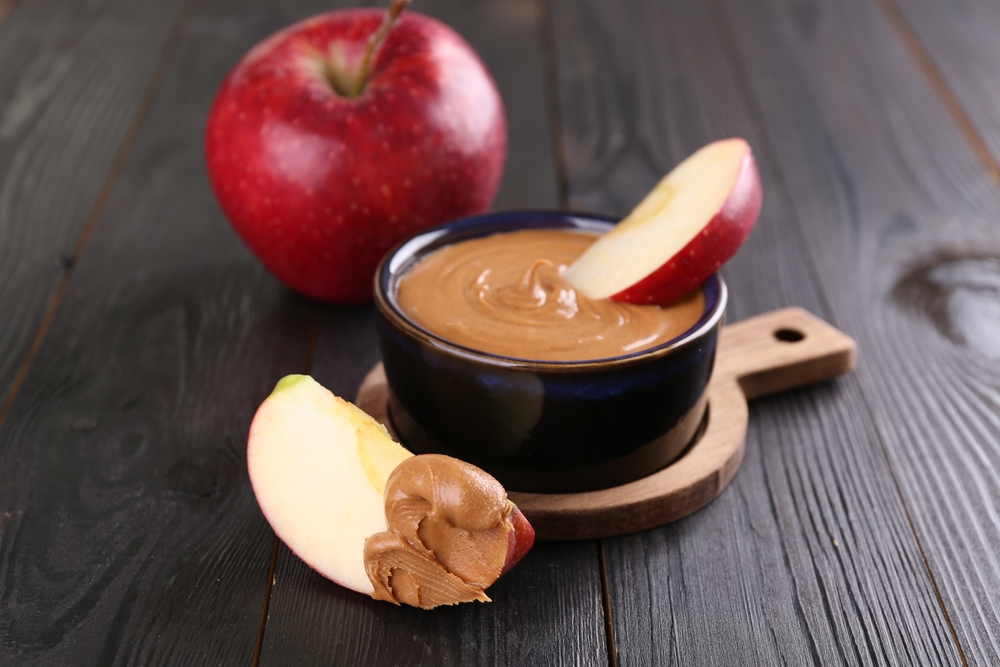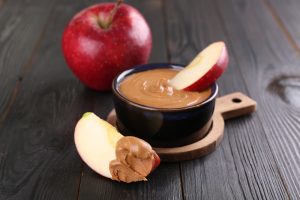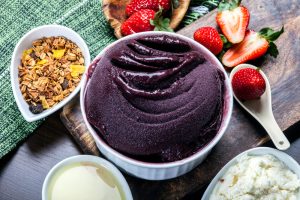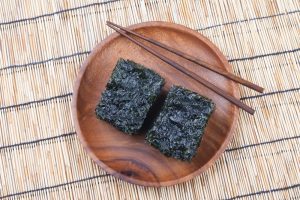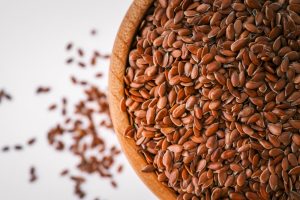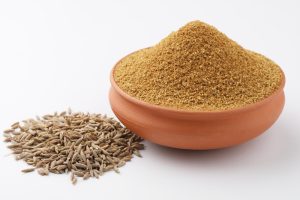Yes, apple and peanut butter can support weight loss when you stick to proper portions—research shows this combination helps control appetite, stabilizes blood sugar, and can prevent you from consuming hundreds of extra calories later in the day.
Studies following over 133,000 people found that those who regularly ate fiber-rich apples and peanut butter had lower body weights and reduced their risk of weight gain by 5% over five years.
Keep reading to discover the exact portions, optimal timing, and specific strategies that make this simple snack combination an effective weight loss tool.
The Scientific Case: Why Apple and Peanut Butter Actually Work for Weight Loss
Large-Scale Evidence Shows Real Results
The research backing apple and peanut butter for weight loss comes from massive, long-term studies that tracked real people over years.
A landmark 24-year study following 133,468 men and women found that higher intakes of fiber-rich fruits—particularly apples and pears—were associated with the least amount of weight gain over time.
Separately, research on peanut butter consumption revealed that people who regularly ate peanuts and peanut butter had lower body weights and faced a 5% lower risk of gaining weight during a five-year period.
Even more compelling, a 2015 study found that children who consumed peanut butter as a daily snack for six months reduced their body mass index significantly more than those who didn't.
Three Powerful Weight Loss Mechanisms
Appetite Suppression That Actually Works The satiety benefits aren't just theoretical.
When researchers had participants eat whole apple segments before meals, they consumed 15% fewer calories at lunch compared to control groups.
This appetite control becomes even stronger when you add peanut butter—a study of 15 women with obesity showed that adding just 3 tablespoons of peanut butter to a high-carb breakfast lowered their appetites more than the breakfast alone.
Metabolic Math That Favors Weight Loss
Here's where the combination gets interesting from a calorie perspective.
A 160-calorie portion of peanut butter (about two tablespoons) may prevent you from eating 300 to 400 extra calories as snacks later in the day.
This creates a net calorie savings that directly supports weight loss—you're essentially trading a smaller amount of calories now for much larger calorie savings later.
Blood Sugar Stability Prevents Overeating
Apples maintain steady blood sugar levels thanks to their low glycemic index of 32-38, preventing the spikes and crashes that trigger hunger and overeating.
The fiber in apples, particularly pectin, interacts with gut bacteria in ways that help modulate how your body processes fat.
Meanwhile, peanut butter helps control blood sugar levels when added to meals, creating a compound effect that reduces appetite throughout the day.
This isn't just about individual ingredients working in isolation—the combination creates a synergistic effect where each component amplifies the weight loss benefits of the other.
Mastering Portions and Timing: The Secret to Success
Getting the Portions Right
Peanut Butter: Precision Matters
Your target serving is exactly 2 tablespoons—about the size of a ping-pong ball—which contains 190-200 calories.
For weight loss, limit yourself to one serving daily maximum. Break this down strategically: no more than 1 tablespoon per meal and 1 teaspoon per snack.
Apple Guidelines That Prevent Backfire
Stick to 2 medium-sized apples (135-150 grams) daily maximum.
While apples support weight loss, overconsumption can actually lead to weight gain despite their health benefits.
The Perfect Combination Formula
A small apple paired with 2 tablespoons of peanut butter creates an optimal 265-calorie snack that delivers substantial protein and fiber.
This specific ratio maximizes satiety while keeping calories controlled.
Strategic Timing for Maximum Impact
Research from The American Journal of Clinical Nutrition reveals that timing dramatically affects results.
The satiating benefits peak when you consume this combination as snacks between meals rather than as part of main meals.
Three Power Windows for Consumption:
- Morning Strategy – Consuming peanut butter at breakfast provides sustained energy and satiety that carries you through to lunch without mid-morning hunger pangs.
- Workout Support – Apple and peanut butter works excellently before exercise for sustained energy or after workouts for recovery. The combination provides both quick energy from natural sugars and sustained fuel from protein and healthy fats.
- Hunger Management Hours – Early afternoon and evening consumption effectively manages hunger and prevents overeating at main meals. This timing leverages the combination's appetite-suppressing effects when you're most likely to reach for less healthy snacks.
The key insight: you're not just eating a snack—you're strategically timing nutrients to control hunger patterns throughout your entire day.
Choosing the Right Products: Quality Determines Results
Peanut Butter: Decode the Label
The Only Ingredients That Matter
Look for peanut butter containing only peanuts and possibly salt.
Avoid anything with added sugars, hydrogenated oils, or artificial additives.
These extras sabotage weight loss efforts and dilute the nutritional benefits you're seeking.
The Oil Separation Test
When oil separates from peanuts upon opening, you've found a winner.
This separation signals a healthier product free from stabilizers and emulsifiers that manufacturers add to create smooth, shelf-stable products at the expense of nutritional quality.
Skip the “Reduced-Fat” Marketing Trap
Reduced-fat peanut butters contain added sugars and sodium while providing minimal calorie reduction—only 4 fewer calories per serving.
You're trading beneficial fats for processed additives that can actually hinder weight loss.
Apple Selection: Variety and Preparation Matter
Fiber-Rich Varieties Win
Choose high-fiber apple varieties like Granny Smith for greater satiety benefits.
These varieties pack more of the fiber that drives the appetite-suppressing effects you need for weight loss success.
Never Peel Your Apples
The peel contains 2-3 times more fiber than the flesh.
Consuming apples with skin intact maximizes the fiber content that helps control hunger and supports healthy digestion.
Washing thoroughly removes surface residues while preserving this nutritional powerhouse.
Smart Shopping and Storage
Label Reading Strategy
Scan ingredient lists for simplicity—the shorter the list, the better.
Natural peanut butters typically have 1-2 ingredients, while processed versions can contain 10 or more additives that offer no weight loss benefits.
Maintaining Nutritional Value
Store natural peanut butter in the refrigerator after opening to prevent rancidity and maintain optimal nutritional content.
Keep apples in the refrigerator's crisper drawer to preserve fiber content and extend freshness.
Room temperature storage degrades both the nutritional value and effectiveness of these weight loss tools.
The bottom line: product quality directly impacts results.
Choose simple, minimally processed options that preserve the natural compounds responsible for weight loss benefits.
Understanding the Limitations: When This Strategy Might Backfire
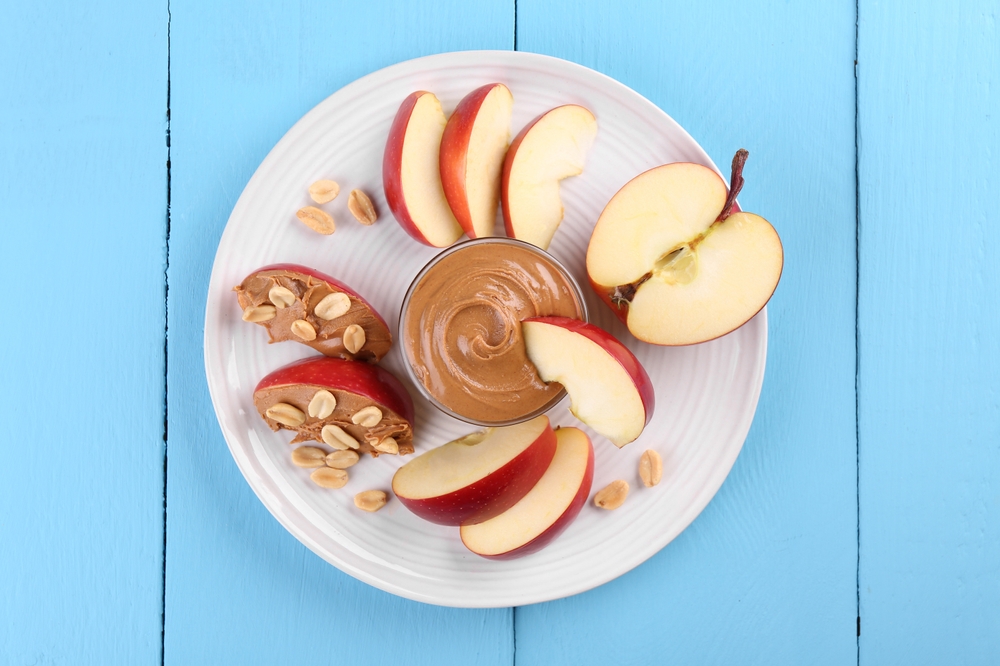
The Calorie Density Reality Check
Peanut butter contains 597 calories per 3.5 ounces—daily overconsumption can easily equal a meal's worth of calories, completely undermining weight loss efforts.
Even apples, despite their health benefits, can lead to weight gain when you consistently exceed the recommended 2 medium apples daily.
The Psychology of Portion Creep
Two tablespoons of peanut butter easily becomes multiple spoonfuls when eating directly from the jar.
This escalation happens unconsciously—what starts as a measured portion quickly transforms into hundreds of untracked calories that sabotage your weight loss goals.
Individual Variability: When This Strategy Won't Work
Allergy and Dietary Restrictions
People with peanut allergies must seek alternatives like almond butter or sunflower seed butter to achieve similar nutritional profiles.
However, these substitutes may have different calorie densities and satiety effects that require portion adjustments.
Metabolic and Digestive Considerations
Some individuals experience digestive discomfort from high-fiber apples or struggle with blood sugar management despite the low glycemic benefits.
Others may have medical conditions that make high-fat foods like peanut butter inappropriate for their weight loss approach.
Situational Challenges That Undermine Success
Timing and Lifestyle Conflicts
Shift workers, frequent travelers, or people with irregular schedules may find it difficult to maintain consistent timing for optimal benefits.
The strategy's effectiveness depends heavily on regular meal patterns and predictable hunger cycles.
Environmental and Social Pressures
Workplace environments with limited storage options, family dynamics that make individual portion control challenging, or social situations that disrupt planned eating patterns can make adherence nearly impossible.
Red Flags That Signal This Strategy Isn't Working
Watch for these warning signs that indicate you should reassess or abandon this approach:
- Consistent weight gain despite following portion guidelines
- Increasing cravings for peanut butter beyond recommended amounts
- Using this combination to justify skipping meals or other unhealthy behaviors
- Digestive issues or energy crashes after consumption
- Finding yourself obsessing over portions or feeling guilty about intake
The key insight: even scientifically-backed strategies have limitations.
Success requires honest self-assessment about whether your lifestyle, health status, and behavioral patterns align with what this approach demands.
Practical Implementation: Making It Work in Your Daily Life
Master Portion Control First
Training Your Eye for Accurate Measurements
Start by measuring peanut butter portions with actual measuring spoons for two weeks until you can accurately eyeball 2 tablespoons.
Use visual cues: 2 tablespoons equals a ping-pong ball, 1 tablespoon resembles a large grape, and 1 teaspoon matches a marble size.
Pre-Portioning for Automatic Success
Create individual snack-sized portions by dividing peanut butter into small containers or using ice cube trays to freeze measured portions.
This eliminates decision fatigue and prevents the common trap of eating directly from the jar.
Pre-wash and slice apples into grab-and-go containers for the week.
Creative Integration That Prevents Boredom
Transform the basic combination into varied applications that maintain nutritional benefits while adding excitement to your routine.
Morning Power-Ups:
- Apple and peanut butter smoothies blended with Greek yogurt for extra protein
- Oatmeal enhanced with diced apples and a measured tablespoon of peanut butter
- Stuffed apple halves filled with peanut butter and cinnamon for a dessert-like breakfast
Beyond Basic Snacking: Dice apples into yogurt bowls with a peanut butter drizzle, create apple “sandwiches” with thin peanut butter layers between apple slices, or freeze apple slices with peanut butter for a satisfying treat that takes longer to eat.
Lifestyle Integration Strategies
Meal Planning Integration
Schedule your apple and peanut butter consumption at consistent times daily.
Plan it as your 3 PM energy boost, post-workout recovery snack, or evening hunger prevention tool.
This consistency trains your body to expect and utilize the nutrients optimally.
Travel and Mobility Solutions
Pack individual peanut butter packets paired with small apples for travel days.
Airport-friendly options include pre-cut apple slices in sealed containers with measured peanut butter portions.
For longer trips, research grocery stores at your destination to maintain fresh apple access.
Kitchen Setup for Success
Strategic Organization
Position measuring spoons next to your peanut butter jar and keep a small cutting board dedicated to apple preparation near your fruit storage.
Store portion-control containers in easily accessible locations to make healthy choices the convenient choices.
Habit Stacking Techniques
Link apple and peanut butter preparation to existing habits.
For example, wash and slice tomorrow's apples while cleaning dinner dishes, or prepare your afternoon snack immediately after lunch.
This creates automatic behavioral chains that support consistency without requiring additional willpower.
The transformation from knowing the strategy to living it successfully happens through these practical systems that make the right choices effortless and sustainable.
Your Complete Action Plan: Putting Science Into Practice
Phase-by-Phase Implementation
Week 1-2: Foundation Building
Start with one apple and peanut butter snack daily, focusing purely on accurate portion measurement.
Use measuring spoons every time and practice visual portion recognition.
Choose your optimal timing window based on your hunger patterns—most people succeed with mid-afternoon consumption.
Week 3-4: Routine Integration
Expand to your full daily allowance while maintaining strict portion control.
Add morning or post-workout timing if desired, but never exceed 2 tablespoons peanut butter and 2 medium apples daily.
Track how the combination affects your hunger at subsequent meals.
Week 5-8: Optimization and Refinement
Fine-tune timing based on your energy and appetite responses.
Experiment with creative applications like smoothies or oatmeal additions while maintaining portion integrity.
This phase reveals your personal sweet spot for maximum benefit.
Daily and Weekly Structure
Your Optimal Daily Schedule:
- Morning option: 1 tablespoon peanut butter with half an apple in oatmeal or smoothie
- Afternoon power window: 1 medium apple with 2 tablespoons peanut butter as standalone snack
- Evening alternative: 1 teaspoon peanut butter with apple slices to manage dinner hunger
Weekly Monitoring Checkpoints: Assess satiety levels, energy consistency, and any changes in meal-time hunger every Sunday.
Track whether you're naturally eating less at main meals—this indicates the strategy is working as intended.
Troubleshooting Common Pitfalls
Portion Creep Solutions
When you catch yourself eating more than intended, immediately return to measuring spoons for one week.
Keep peanut butter in the refrigerator to slow consumption pace, and pre-portion apples to remove the temptation to grab “just one more slice.”
Timing Difficulties
If your schedule disrupts optimal timing, prioritize consistency over perfection.
Eating this combination at a less-than-ideal time still provides benefits—just maintain your portions and adjust your main meals accordingly.
Product Selection Mistakes
Switch immediately if you realize you've chosen processed peanut butter with added sugars.
The transition might temporarily affect taste preferences, but your appetite control will improve within days of making the switch.
Progress Monitoring That Actually Works
Track these indicators weekly rather than obsessing over daily fluctuations:
Satiety Signals: Are you naturally eating smaller portions at meals? Do you feel satisfied longer after consuming the combination? These changes often appear before weight loss becomes visible.
Energy Patterns: Notice whether your energy remains steady throughout the day without the typical afternoon crash. Consistent energy indicates improved blood sugar management.
Behavioral Changes: Monitor whether you're reaching for other snacks less frequently or finding it easier to stick to planned meals.
Integration with Broader Weight Loss Goals
This strategy works best as part of a comprehensive approach rather than a standalone solution.
Calculate the 265 calories from your apple and peanut butter snack into your daily calorie targets.
If you're following specific macronutrient ratios, account for approximately 8 grams protein, 16 grams fat, and 25 grams carbohydrates from the full combination.
Use the appetite control benefits to support other healthy eating goals—the reduced hunger makes it easier to choose nutrient-dense foods at meals and resist impulse eating.
Long-Term Sustainability and Adaptation
When to Reassess Your Approach: After 8-12 weeks, evaluate whether the benefits justify continued implementation.
If weight loss plateaus despite consistent adherence, consider reducing portion sizes or frequency rather than abandoning the strategy entirely.
Seasonal and Lifestyle Adjustments
Adapt apple varieties based on seasonal availability while maintaining fiber-rich choices.
During periods of increased activity or stress, you might need to adjust timing or portions to match your changing energy demands.
Plateau Management
If progress stalls, first examine whether portion creep has occurred, then consider whether your timing needs adjustment.
Sometimes reducing frequency from daily to 4-5 times weekly can reignite progress while maintaining benefits.
The key to long-term success lies in viewing this strategy as a tool that adapts to your changing needs rather than a rigid rule that controls your eating.
When implemented consistently with attention to portions and timing, apple and peanut butter becomes a sustainable component of lasting weight management.
Conclusion
Apple and peanut butter delivers scientifically-proven weight loss benefits when you stick to the right portions and timing—2 tablespoons of natural peanut butter with 1-2 medium apples daily, consumed strategically between meals.
This simple combination leverages powerful appetite control, blood sugar stabilization, and metabolic advantages that can prevent hundreds of extra calories from derailing your progress.
Start with one perfectly-portioned snack daily, track your hunger patterns, and let the research-backed results speak for themselves.

